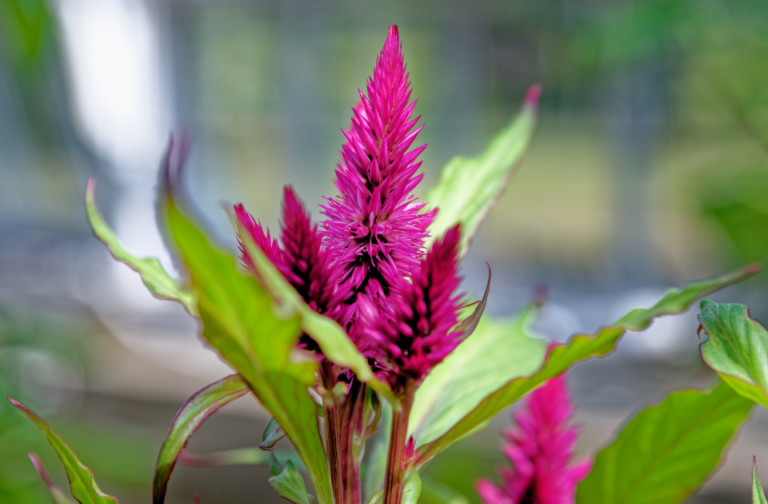Celosia, known for its flame-like blooms and striking colors, is one of the most popular flowers to add texture and vibrancy to gardens. With various types and a range of bright colors, it’s a gardener’s delight. This guide will cover everything you need to know about planting, growing, and caring for celosia, as well as some tips for using it in landscaping and flower arrangements.
What is Celosia?
Celosia flowers are well known for their bright, flame-like blooms that come in various colors such as red, yellow, orange, and purple. These unique blooms are a favorite among gardeners because Celosia flowers can add vibrant color to any landscape.
Celosia varieties include:
- Celosia Cristata (Cockscomb) – With a distinct brain-like structure.
- Celosia Plumosa (Feather Celosia) – Feathery, soft blooms.
- Celosia Spicata (Wheat Celosia) – Wheat-like spikes in bright colors.
For an in-depth guide on another popular garden plant, be sure to check out the Crape Myrtle Flowers: A Complete Guide to Growing and Caring for more garden inspiration.
Varieties of Celosia
Celosia Argentea
This is a commonly grown variety known for its long-lasting blooms and striking colors.
Celosia Cristata (Cockscomb)
The Cockscomb variety is famous for its unique crest-like structure, resembling a rooster’s comb. This bold and eye-catching variety is great for adding texture to your garden.
Celosia Plumosa (Feather Celosia)
With its feathery appearance, Feather Celosia adds a soft and delicate touch to any garden landscape.
If you are planning to grow celosia alongside sun-loving plants, consider reading Growing Sunflowers from Seed: A Complete Guide, which provides complementary tips for cultivating other bright and hardy plants.
How to Grow Celosia
Ideal Growing Conditions
Celosia thrives in warm climates and prefers full sunlight. It grows best in USDA hardiness zones 10 to 11, although it can be grown as an annual in cooler climates.
- Soil: Requires well-drained, slightly acidic soil (pH 6.0–7.0).
- Watering: Celosia needs regular watering, but be careful not to overwater, as it is susceptible to root rot.
If you’re considering growing celosia in warm climates, here’s a detailed guide on Gardening in Warm Climates to help you get started.
Planting Celosia Seeds
Celosia can be grown from seeds either indoors or directly in the garden.
- For indoor planting, start seeds 6 to 8 weeks before the last frost in your area. Keep them in a warm, sunny spot.
- For outdoor planting, sow seeds after the last frost and space them 6–12 inches apart to allow room for their full growth.
To enhance soil fertility and give your celosia a better growing environment, consider using natural fertilizers. Learn more about eco-friendly gardening methods by checking out Bury Fish Scraps as Natural Fertilizer for a Thriving Garden.
Caring for Celosia
Once established, celosia is relatively easy to care for. It requires:
- Full sun exposure for at least 6–8 hours per day.
- Regular watering to keep the soil moist but not waterlogged.
- Occasional deadheading (removing spent flowers) to encourage continuous blooming.
Uses of Celosia in Gardening and Landscaping
Celosia in Garden Design
Celosia makes for a vibrant border plant or a container plant. Its bright colors and unique structure work well when paired with other summer blooms such as zinnias, marigolds, and petunias.
For more ideas on pairing plants in your garden, consider reading What Herbs to Plant Together: A Complete Guide to Companion Planting.
Cut Flowers and Dried Flower Arrangements
Celosia is popular as a cut flower due to its unique structure and long-lasting blooms. Additionally, its vibrant colors are preserved well when dried, making it a great option for dried flower arrangements and crafts.
- Pro tip: Harvest celosia early in the morning when the stems are well-hydrated. This helps keep the flowers fresh for longer.
Common Problems and Solutions
Pests and Diseases
Celosia is relatively resilient, but it can still fall prey to some pests and diseases:
- Aphids and spider mites are the most common pests.
- Fungal infections, such as powdery mildew, can be a problem if the plant is overwatered or if there’s poor air circulation.
If you’re experiencing aphid infestations, read A Comprehensive Guide to Aphids: Understanding, Controlling, and Preventing Infestations to learn more about effective treatment solutions.
With its stunning appearance and relatively low-maintenance nature, celosia is a fantastic addition to any garden. Whether you’re using it for landscaping or as a cut flower, celosia will undoubtedly add color and flair to your outdoor space.
